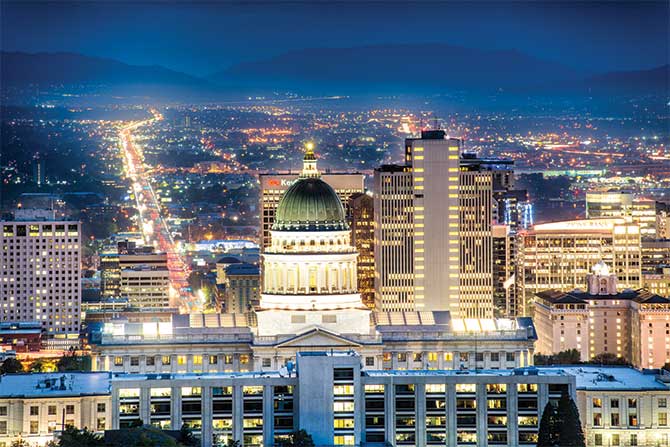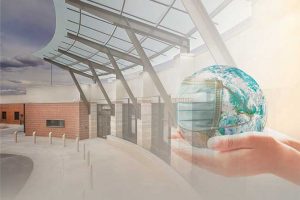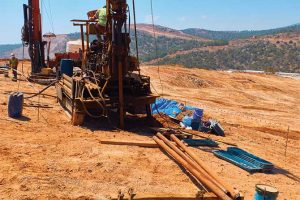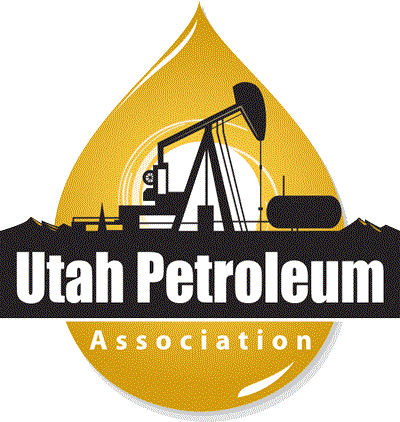By The Utah Petroleum Association
An ongoing and long term challenge our downstream sector is navigating is Wasatch Front air quality. Recent months have seen significant development along this front. First, a sincere congratulation goes out to Michelle Bujdoso from Marathon for her appointment to the Air Quality Board (AQB). We are confident Michelle will add depth and expertise to the Board’s deliberations and play a key role in helping to shape the state’s future air quality policy.
In their November Board meeting, the AQB was briefed by the Division of Air Quality (DAQ) that they do not plan to proceed with the previously discussed PM 2.5 offset rule (R307-422). When DAQ first proposed this rule in the summer, UPA engaged in discussions with DAQ and submitted formal comments raising concerns that because the proposed rule goes beyond the federal requirements, Utah law requires DAQ to provide a technical justification of the need for the rule, as well as meet some other specific requirements. In response, DAQ carried out additional modelling and other activities to more rigorously evaluate the need for the PM 2.5 offset rule. As presented by DAQ at the November AQB meeting, the result is that current measures the Division put forward in the PM 2.5 SIP package are indeed sufficient to ensure the Salt Lake airshed maintains compliance with the PM 2.5 standard – there is no technical justification necessitating the rule. The Division’s decision is paramount to allowing responsible development for continued sustainable growth along the Wasatch Front. Just days later, the Environmental Protection Agency also announced their proposed redesignation to attainment for the Salt Lake City and Provo PM2.5 non-attainment areas. Further confirming that the current regulatory standards and maintenance plans already approved ensure that the Wasatch Front will continue to meet the PM 2.5 standard.
In other news, at the October Air Quality Policy Advisory Board meeting, DAQ presented their plan to address the next Wasatch front air quality challenge – ozone non-attainment. As a result of concerted efforts on the part of Utah’s policymakers, regulators, industry and citizens over the past 15 years, the Wasatch Front airshed has achieved a 37% reduction in VOC and NOx emissions – the “precursor” emissions that lead to the formation of both PM 2.5 and ozone pollution. Despite this reduction of VOC and NOx emissions and reduction in PM2.5 pollution, levels of ozone pollution have remained virtually unchanged. In other words, controls and measures that have successfully reduced precursor emissions and PM 2.5 should have also reduced ozone, but haven’t (see Figure 1).

One reason for persistent ozone pollution is the fact that the majority of ozone in the Wasatch Front airshed comes from other states, international sources and natural sources. According to a recent study from the Environmental Protection Agency, less than 20% of Utah’s ozone pollution comes from in-state and human-made sources. Much of that small fraction of in-state, human-made ozone is difficult for state regulators to address: 65% comes from mobile sources, which are federally regulated and 30% comes from widely distributed and difficult to control area source (homes, buildings and small businesses).
The Wasatch Front airshed is on track to be bumped up from “marginal” to “moderate” non-attainment for ozone in 2022 and potentially “serious” non-attainment in 2025. DAQ has started modelling and taking a hard look at how they will demonstrate attainment of the standard and have acknowledged that there are very limited levers they can pull to move the needle and improve air quality. Further complicating the issue is that the non-attainment designation will require state regulators to impose additional costly controls on industries that are likely to have very little effect on achieving attainment of the ozone standard.
As such, DAQ has started working on a strategy using the flexibility provided for in the Clean Air Act that allows states to develop a “179B demonstration” if they can show that “but for” the impact of ozone pollution from international sources, the Wasatch Front would attain the standard. Preliminary analysis using photochemical modelling has shown that the Wasatch Front airshed would indeed be within federal ozone standards, but for the international transport of ozone. DAQ’s work is far from done, but UPA supports DAQ pursuing a strategy that gives greater flexibility in developing controls that stand a greater chance of improving our ozone problem.
The Utah Petroleum Association
This story appears in Pub 2 2020-21 Issue 1 of the UPDATE Magazine.









